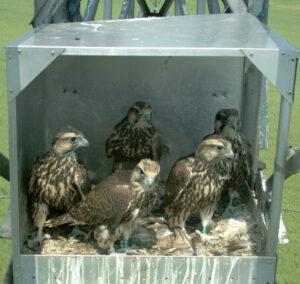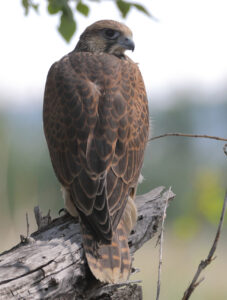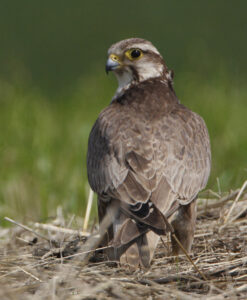Third International Scientific and Practical Conference “Eagles of the Palearctic: Study and Conservation”
Raptors Conservation. Suppl. 2. Proceedings of Conferences
Status of the Saker Falcon in Hungary between 1980 and 2022
Bagyura J., Szitta T., Haraszthy L. (MME BirdLife Hungary, Budapest, Hungary)
Prommer M. (University of Florida, USA)
Horvath M. (MME BirdLife Hungary, Budapest, Hungary)
Contact:
Janos Bagyura bagyura.janos@mme.hu
Tamas Szitta tamas.szitta@gmail.com
Laszlo Haraszthy haraszthyl@gmail.com
Matyas Prommer mprommer@gmail.com
Márton Horváth horvath.marton@mme.hu
Recommended citation: Bagyura J., Szitta T., Haraszthy L., Prommer M., Horvath M. Status of the Saker Falcon in Hungary between 1980 and 2022. – Raptors Conservation. 2023. S2: 447–449. DOI: 10.19074/1814-8654-2023-2-447-449 URL: http://rrrcn.ru/en/archives/35216
There is limited data available about the status of the Saker Falcon (Falco cherrug) in Hungary before 1980. According to available sources, the species was a regular breeder in several habitat types, but was not common in the late 19th and early 20th centuries. The population decreased significantly through the 20th century falling to fewer than 50 pairs after World War II. The main reasons for the population decrease were DDT and widespread persecution (poisoning and shooting) of raptors by hunters. The species had reached the brink of extinction in Hungary by the 1970s. The Hungarian population of Saker Falcon is closely monitored and protected by MME BirdLife Hungary and the Hungarian National Park directorates’ ranger service over the last forty years. In the framework of Hungary’s national Saker Falcon conservation program, several significant actions have been undertaken: all potential breeding sites were surveyed, nest began to be formally guarded, artificial nests were installed on trees and high-voltage electric pylons, dangerous medium-voltage poles have been retrofitted with bird-friendly designs, and European Ground Squirrels (Spermophilus citellus) have been translocated to their former habitats. In addition, research activities including banding, GPStracking, and prey analyses have begun. The conservation program received significant support from WWF (1986–1990), the European Union’s LIFE Nature program (2016–2018), and the Hungarian government. Thanks to these varied and widespread efforts, the population started to increase slowly, but continuously between 1980 and 2010, with an average population growth rate was approximately 11% annually. The number of known nesting pairs has increased from eight pairs (1980) to 172 pairs (2010). Later population abundance showed fluctuating trends between 2011 and 2022, but remained more or less stable (143–185 pairs). The Hungarian population of Saker Falcons is estimated to be 180–200 nesting pairs. In 2022, 175 nesting pair were documented and 444 chicks fledged from 152 successful breeding attempts. A new EU funded “LIFE SakerRoads” project was launched in 2023 to increase the species’ population on the North-Hungarian Plain, where a significant decline was observed over the last decade.

Saker Falcon (Falco cherrug) nestlings in an artificial nest on the power pole. Photo from Milvus Group.


